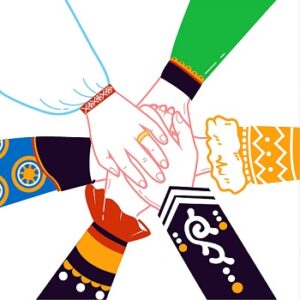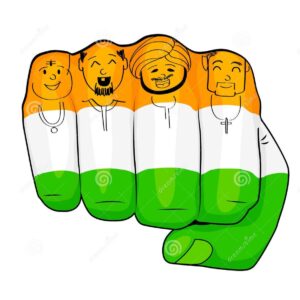National unity, a three-dimensional view
Relevance
- GS Paper 1 Modern Indian History.
- Tags: #Nationalunityday #RashtriyaEktaDiwas
Why in the news?
India’s national unity evolved over more than a century, through political and social movements and legal and constitutional designs. This involved intense battles and wise compromises among constituent groups.
The national identity thus constituted developed along three dimensions:
- The first dimension is the search for harmony and justice among castes,
- The second is harmony of religious communities, and
- The third is a common ground among various regional identities.
These three dimensions can be alternatively labelled as Hindu unity, Hindu-Muslim unity, and heartland-periphery unity.
The three axes
Caste Based Unity
- Gandhi recognized that caste-based discrimination would hinder Hindu unity, which in turn would obstruct national unity. The biggest challenge in Gandhi’s Hindu unity platform was the proposed separate electorate for the depressed classes.
- Reservation remains part of state policy and politics, envisaged largely as an instrument to mitigate caste-based disadvantages within Hindu society. Dalits who convert to Christianity or Islam become ineligible for reservation under the Scheduled Caste category.
Hindu-Muslim Unity
- Hindu unity was non-negotiable for Gandhi, but Hindu-Muslim unity was an equally important second pillar of national unity for him.
- Gandhi viewed Muslims as a distinct community, recognized their autonomy, and sought out Muslim leaders in efforts to build Hindu-Muslim unity.
- He joined forces with the Khilafat Movement, which was driven by a transnational Muslim agenda but united with Hindus in its anti-imperialist edge.
Northern – Southern Unity
- The third axis, of the link between the heartland and periphery, took shape in response to the realities that the founders encountered during the making of the Constitution.
- During the national movement, a Hindi public sphere that emerged in the northern plains had begun to equate itself with the ‘national’, and sentiments elsewhere were ignored.
- Article 370 gave special status to Jammu and Kashmir; the Sixth Schedule gave autonomy to the tribal populations in the Northeast.
- In 1976, considering the diverging population trends in the south and the north, inter-State redistribution of Lok Sabha representation was suspended for 25 years, and then again in 2002 for another 25 years.
Rashtriya Ekta Diwas or National Unity Day
- Rashtriya Ekta Diwas or National Unity Day is celebrated annually on October 31 to pay tribute to Sardar Vallabhbhai Patel, an Indian freedom fighter and independent India’s first deputy prime minister and home minister.
- He was instrumental in making a united India from the 565 semi-autonomous princely states and British-era colonial provinces.
- For his efforts towards a united India, Sardar Patel’s birth anniversary is now celebrated as National Unity Day in the country.
- People mark the day with activities such as runs for unity. On this day, locals are encouraged to remember the inherent strength and resilience of the nation.
Source: The Hindu
Mains Questions
Regionalism is a threat to maintaining ‘unity in diversity’ in India.” Critically analyze the given statement.





